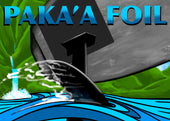Aluminum versus Carbon Fiber Foil Sets
There are two main materials for the mast and fuselage of foil sets - aluminum or carbon fiber - both have their pros and cons. Most front wings are carbon fiber over foam, and tail wings are either carbon fiber or increasingly G10 material.

Aluminum is much cheaper and has the benefit of being stiffer and tougher, and the stiffness is still a metric for carbon fiber masts to measure up to. The cons for aluminum are that is is usually heavier (high modulas carbon fiber with minimal flex is just about as heavy now though), it needs more maintenance (rinsed and taken apart after every salt water use), and if it bends it will stay that way (so not recommended for jumping and freestyle on wing foil)
Full carbon fiber setups are a bit lighter, much more expensive and basically maintenance free. Carbon masts can flex more than aluminum and not be permanently torqued.
For instance, for Konrad the aluminum mast and fuselage weighs a little over 5.5lbs, the carbon set weight ~4lbs. A new aluminum mast costs ~$150, a new carbon mast cost ~$750.
The weight difference between a carbon fiber setup and aluminum is really only noticeable when carrying the gear down the beach and if you're doing some jumping rotations (360s, backloop, etc). Aluminum is a great starter set, and in truth works great in all conditions and all levels, but almost all pros, diehards, and serious weekend warriors ride carbon fiber setups.




